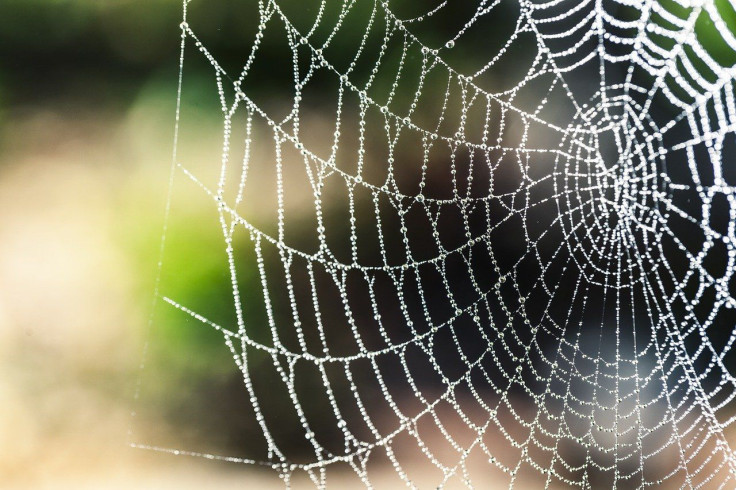Spider Silk's Supposed Antimicrobial Properties 'Not Supported' By Data, Study Finds
KEY POINTS
- In ancient Rome, for instance, spider silk was used for lesions and warts
- Researchers tested antimicrobial activity of spider silk against several bacteria types
- Previous studies that found antimicrobial activity may have been "compromised"
Does spider silk really have healing properties? Researchers found that the long-standing belief that spider silk has antimicrobial properties is "not supported by empirical data."
Among the most "prominent" adaptations of spiders is the production of spider silk, the researcher of a new study, published Tuesday in iScience, said. This silk has "high tensile strength and flexibility" and is used by the creatures for various purposes such as making egg cases or snares to capture prey.
Spider silk has also long been touted as a remedy for various ailments because of its supposed antimicrobial properties. In ancient Rome, for instance, spider silk was used for lesions and warts, Cell Press noted in a news release.
However, the studies that have investigated spider silk's supposed antimicrobial properties have turned up "conflicting" results, the researchers noted, with some of them confirming antimicrobial activity (AMA) while the others don't.
"Spider silk has always been admired and almost has a mythical status," senior author of the current study, Trine Bilde of Aarhus University, said in the Cell Press news release. "It's one of these myths that seems to have become 'established' by 'belief' and not by strong empirical support," the author said.
For their study, the researchers tested the antimicrobial activity of spider silk from seven species against Gram-negative Escherichia coli and Pseudomonas putida and Gram-positive Bacillus subtilis.
"Across all species and replicates, we found no evidence for AMA of silk of the studied spider species, i.e. no suppression of growth of any of the tested microbes," the researchers wrote, adding that the results were corroborated by epifluorescence microscopy, which revealed that the "majority" of the cells that came in direct contact with the spider silk strands were still alive.
"We were unable to detect antimicrobial activity of social spider silk, regardless of method or microbe, and this made us curious about why other studies were able to," Bilde said, as per Cell Press. "We then started scrutinizing the papers reporting antimicrobial activity in fine detail and became aware of methodological shortcomings," she continued.
Specifically, the researchers identified two types of problems -- the first being the risk for bacterial contamination and the other being the "lack of control for solvent effects." For instance, they may have measured the antimicrobial effects of the solvents used, such as acetone and ethyl acetate, instead of the spider silk.
"Naturally, we cannot exclude the possibility that silk of other and so far untested spider species might show antimicrobial properties, or that spider silk may show AMA against microbes that were not tested in the studies reported here," the researchers wrote. "Nevertheless, the current evidence shows that the widely held expectation of inherent antimicrobial properties of spider silk is not justified," the study stated.
"Rather than assuming that spider silk is antimicrobial, we should now assume that it isn't," Bilde said in the news release. "We can still test the idea in new species and with new organisms, but with a more cautious starting point," she concluded.

© Copyright IBTimes 2025. All rights reserved.






















